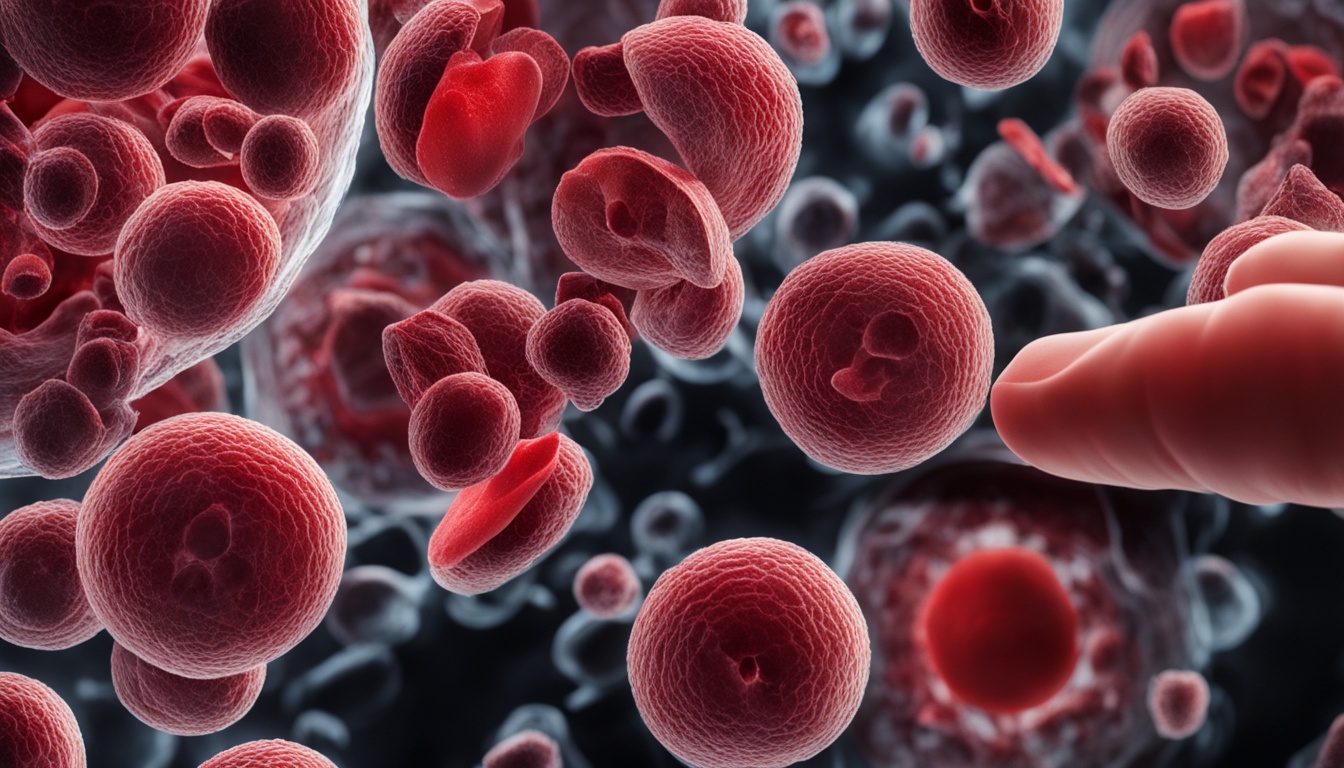Thrombocytopenia is when someone has too few platelets in their blood. These platelets help our blood to clot, stopping us from bleeding too much. If you have thrombocytopenia, you might notice that you bruise easily, or your bleeding takes longer to stop. You may also see tiny red or purple spots on your skin or bleed more during your period. Things like certain drugs, diseases that attack your body, problems with your bone marrow, and infections can lead to thrombocytopenia.
Doctors diagnose thrombocytopenia by asking about your health, checking you over, and doing blood tests to count your platelets. In severe situations, doctors might suggest using stem cell therapy as a way to treat it. While dealing with thrombocytopenia can be tough, getting the right diagnosis and care can help people live fully.
Key Takeaways:
- Thrombocytopenia is a condition characterized by a low platelet count in the blood.
- Common symptoms include easy bruising, prolonged bleeding, petechiae, and excessive bleeding during menstruation.
- Causes include certain medications, autoimmune diseases, bone marrow disorders, and viral infections.
- Diagnosis involves a medical history review, physical examination, and blood tests.
- Stem cell therapy may be considered for severe cases.
Understanding Thrombocytopenia and its Causes
Thrombocytopenia means there are too few platelets in your blood. Platelets help your blood to clot and stop you from bleeding too much. It’s important to know why someone has thrombocytopenia to treat it well.
It happens when your body doesn’t make enough platelets or when they are used up quickly. Many things can lead to this problem:
1. Medications:
Some drugs, like heparin and antibiotics, might make your body not make enough platelets. This can lower your platelet count.
2. Autoimmune Diseases:
If you have an autoimmune disease, your body may attack your own platelets. This mistake can make your platelet count drop.
3. Bone Marrow Disorders:
Issues with your bone marrow, like aplastic anemia and leukemia, can reduce platelet production. This causes thrombocytopenia.
4. Viral Infections:
Viruses such as Epstein-Barr and HIV sometimes lower your platelet count. They can hurt platelet production or cause an attack on them by your immune system.
5. Excessive Alcohol Consumption:
Drinking too much alcohol can also make your body produce fewer platelets. This can cause thrombocytopenia.
Being pregnant or having a rare disorder that affects your blood’s ability to clot can also cause thrombocytopenia.
Knowing the causes of your thrombocytopenia helps doctors choose the right treatment. It’s important to see a doctor for a diagnosis and treatment plan made for you.
| Causes of Thrombocytopenia | Examples |
|---|---|
| Medications | Heparin, antibiotics |
| Autoimmune Diseases | Lupus, immune thrombocytopenia |
| Bone Marrow Disorders | Aplastic anemia, leukemia |
| Viral Infections | Epstein-Barr, HIV |
| Excessive Alcohol Consumption |
Diagnosis and Management of Thrombocytopenia
Finding out if someone has thrombocytopenia involves a few steps. These steps include looking at their past medical history and doing a health check-up.
Doctors also do blood tests to count the person’s platelets. Normally, people have between 150,000 and 450,000 platelets per tiny drop of their blood.
How doctors treat thrombocytopenia depends on what caused it and how bad it is. If it’s not serious, they might not need to do anything. But if it’s severe, treatment could involve medications like steroids, immune globulin, or even surgery.
There’s a new treatment area being explored, too. This is called stem cell therapy. It’s always important to work with your doctor to find the best treatment for you.

